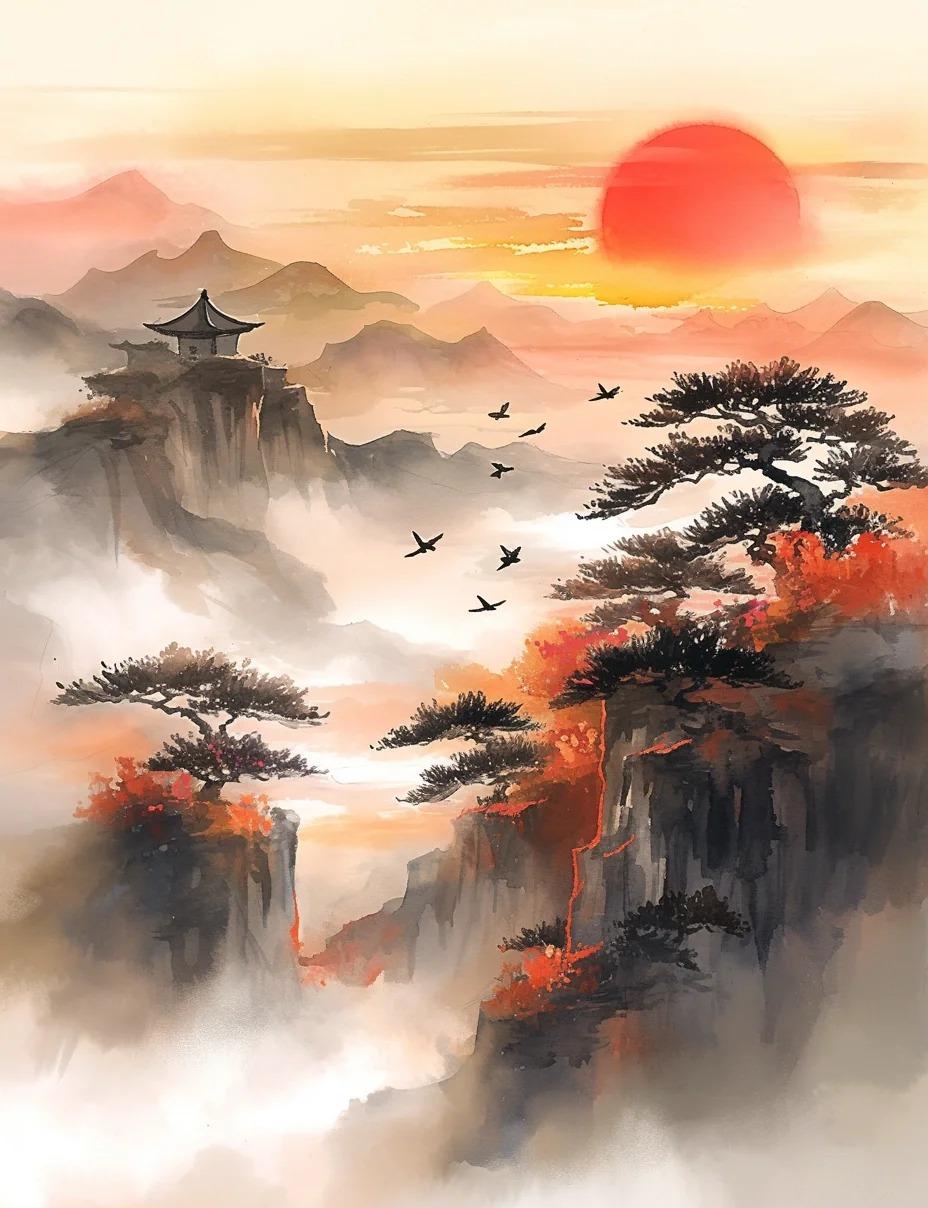Introduction to Chinese Art
Chinese art, with its rich history spanning over 5,000 years, is a testament to the country’s enduring cultural legacy. From ancient bronze vessels to contemporary installations, Chinese artwork has continuously evolved while maintaining its distinct aesthetic and philosophical foundations.
Art in Chinese culture is more than mere decoration; it’s a profound expression of harmony between humanity and nature, a reflection of spiritual beliefs, and a celebration of technical mastery. Throughout various dynasties, Chinese art has flourished, each era contributing unique styles and innovations.

| Dynasty | Period | Notable Art Forms |
|---|---|---|
| Han | 206 BCE – 220 CE | Silk painting, jade carving |
| Tang | 618 – 907 CE | Buddhist sculpture, poetry |
| Song | 960 – 1279 CE | Landscape painting, ceramics |
| Ming | 1368 – 1644 CE | Blue and white porcelain, furniture |
| Qing | 1644 – 1912 CE | Imperial art, snuff bottle painting |
Traditional Chinese Painting
Chinese painting is renowned for its elegant simplicity and profound symbolism. Three main genres dominate this art form:
- Landscape painting (山水画): Depicting mountains, rivers, and natural scenes, often with tiny human figures to emphasize nature’s grandeur.
- Bird-and-flower painting (花鸟画): Showcasing the beauty of flora and fauna, often with symbolic meanings.
- Figure painting (人物画): Portraying historical figures, everyday life, and mythological scenes.
Traditional painting techniques involve the skillful use of brush and ink on silk or paper. The artist’s goal is not photorealistic representation, but rather capturing the essence or spirit of the subject.

Calligraphy: The Art of Beautiful Writing
In China, calligraphy is considered the highest form of art, revered for its ability to convey both meaning and aesthetic beauty. Major styles include:
- Seal script (篆书): Ancient, formal style used for seals
- Clerical script (隶书): More fluid, developed during Han Dynasty
- Regular script (楷书): Standard, easily readable style
- Running script (行书): Semi-cursive, balancing readability and artistic expression
- Cursive script (草书): Fluid, abstract style requiring high skill to read and write
Famous calligraphers like Wang Xizhi (303-361 CE) elevated the art form to new heights. The principles of calligraphy heavily influence Chinese painting, with many artists excelling in both disciplines.

Ceramics and Porcelain: China’s Gift to the World
Chinese ceramics, particularly porcelain, have been prized globally for centuries. The development of high-fired ceramics during the Tang Dynasty led to the creation of true porcelain, a Chinese innovation that changed the world of art and commerce.
Famous styles include:
- Blue and white porcelain (青花瓷): Cobalt blue designs on white porcelain
- Celadon (青瓷): Pale green glazed pottery
- Famille rose (粉彩): Porcelain with a palette dominated by rose colors
Jingdezhen, known as the “Porcelain Capital,” has been at the heart of China’s ceramic production for over 1,700 years, creating pieces for imperial courts and international markets alike.

Sculpture and Bronze Work
Chinese sculpture has a long history, with Buddhist art playing a significant role in its development. The colossal Buddhas of Longmen Grottoes and the intricate sculptures of the Mogao Caves showcase the pinnacle of this art form.
Bronze work in China dates back to the Shang Dynasty (1600-1046 BCE), with intricate ritual vessels demonstrating advanced casting techniques. The discovery of the Terracotta Warriors in Xi’an revealed the breathtaking scale and detail of ancient Chinese sculpture.
Jade carving, considered the most precious of arts, has been practiced in China for over 8,000 years. Its durability and beauty made it a symbol of virtue and immortality.
Modern and Contemporary Chinese Art
The 20th century saw a dramatic shift in Chinese art as it encountered Western influences. Artists like Xu Beihong integrated Western techniques with traditional Chinese aesthetics, while the Cultural Revolution period (1966-1976) saw art largely confined to political propaganda.
Post-1978, contemporary Chinese art has exploded onto the global scene. Artists like Ai Weiwei, Yue Minjun, and Zeng Fanzhi have gained international recognition for their innovative works that often comment on social and political issues.
Current trends in Chinese art include a renewed interest in traditional techniques, digital and new media art, and works addressing urbanization and cultural identity in modern China.
Experiencing Chinese Art as a Traveler
For art enthusiasts visiting China, there’s a wealth of experiences to be had:
- Museums: The Palace Museum in Beijing, Shanghai Museum, and National Art Museum of China offer extensive collections of traditional and modern art.
- Art Districts: 798 Art District in Beijing and M50 in Shanghai showcase contemporary Chinese art in converted industrial spaces.
- Workshops: Many cities offer workshops where tourists can try their hand at calligraphy, ink painting, or ceramics.
When buying art, be wary of fakes, especially in tourist areas. Purchase from reputable galleries or directly from artists when possible.
Etiquette Tips:
- Dress modestly when visiting temples or traditional sites
- Ask permission before photographing artworks or artists
- Avoid touching sculptures or paintings, even in public spaces
Chinese art, with its millennia of history and ongoing innovation, offers a window into the soul of this ancient civilization. Whether you’re admiring the delicate brushstrokes of a Song Dynasty landscape or pondering a provocative contemporary installation, Chinese artwork invites you to see the world through a unique cultural lens, where tradition and modernity, simplicity and complexity, coexist in harmonious beauty.





